Why Baringo residents want Lake Kamnarok to be restored
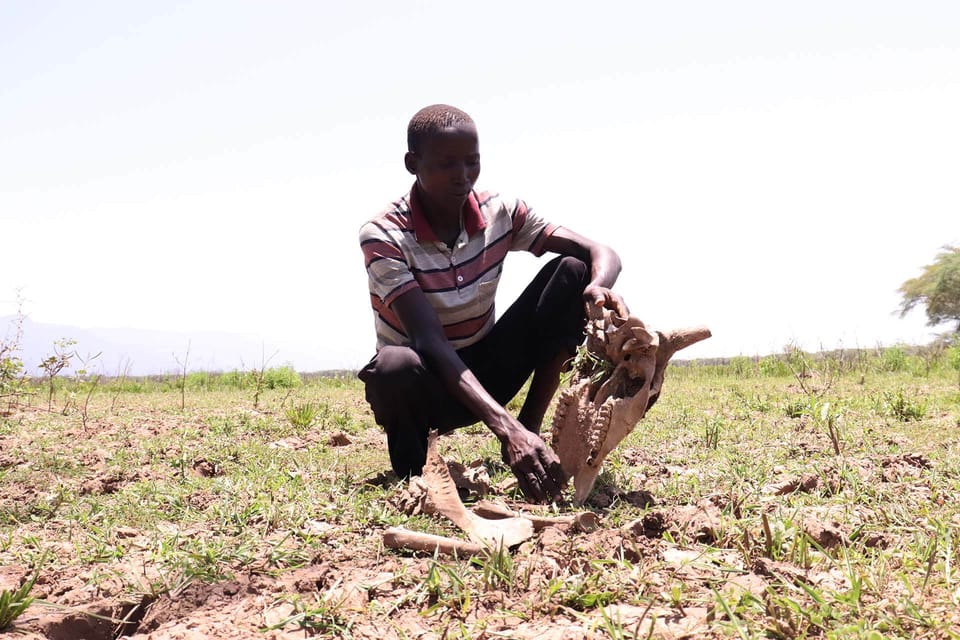
Lake Kamnarok, a large oxbow lake and a source of livelihood for many, is diminishing in size and losing its biodiversity due to climate-induced droughts and people’s activities. As the return of biodiversity would benefit the local communities in many ways, they want Lake Kamnarok to be restored, writes Barack Oduor.
Tracks of hooves stretch across the dry lake bed towards the imposing escarpment. I follow them to find out why Kamnarok, once a magnificent lake, seems to have vanished.
I am in Kenya’s Rift Valley, walking on the flat lake bed. It feels like a trudge in a massive football pitch invaded by livestock in dire need of water and pasture.
An abandoned rusting view point next to an overgrown thicket of shrubs signals the reality of Lake Kamnarok that no longer attracts visitors. In the distance I spot several skeletons of livestock that had died last year after their only source of water – this lake – dried out.
The sun is overhead when I meet Moses Kipcheboi, a 43-year-old fisherman-turned-sand harvester, herding his livestock. He lost 25 of his livestock to drought last year. He is keeping his fingers crossed about the next season.
While Kipcheboi is pensive over his predicament, Kenya’s President William Ruto hosts the inaugural Africa Climate Summit (ACS23) in the country’s capital Nairobi, with at least 15 heads of states and the United Nations Secretary-General Antonio Guterres attending it. The meeting’s aim is to address the increasing impact of climate change and its associated costs globally, particularly in Africa.
Kipcheboi doesn’t know about the Nairobi meeting or its agenda of green growth. But he is sure of one thing: Lake Kamnarok should be restored to its former glory if he and his descendants are to evade a bleak future
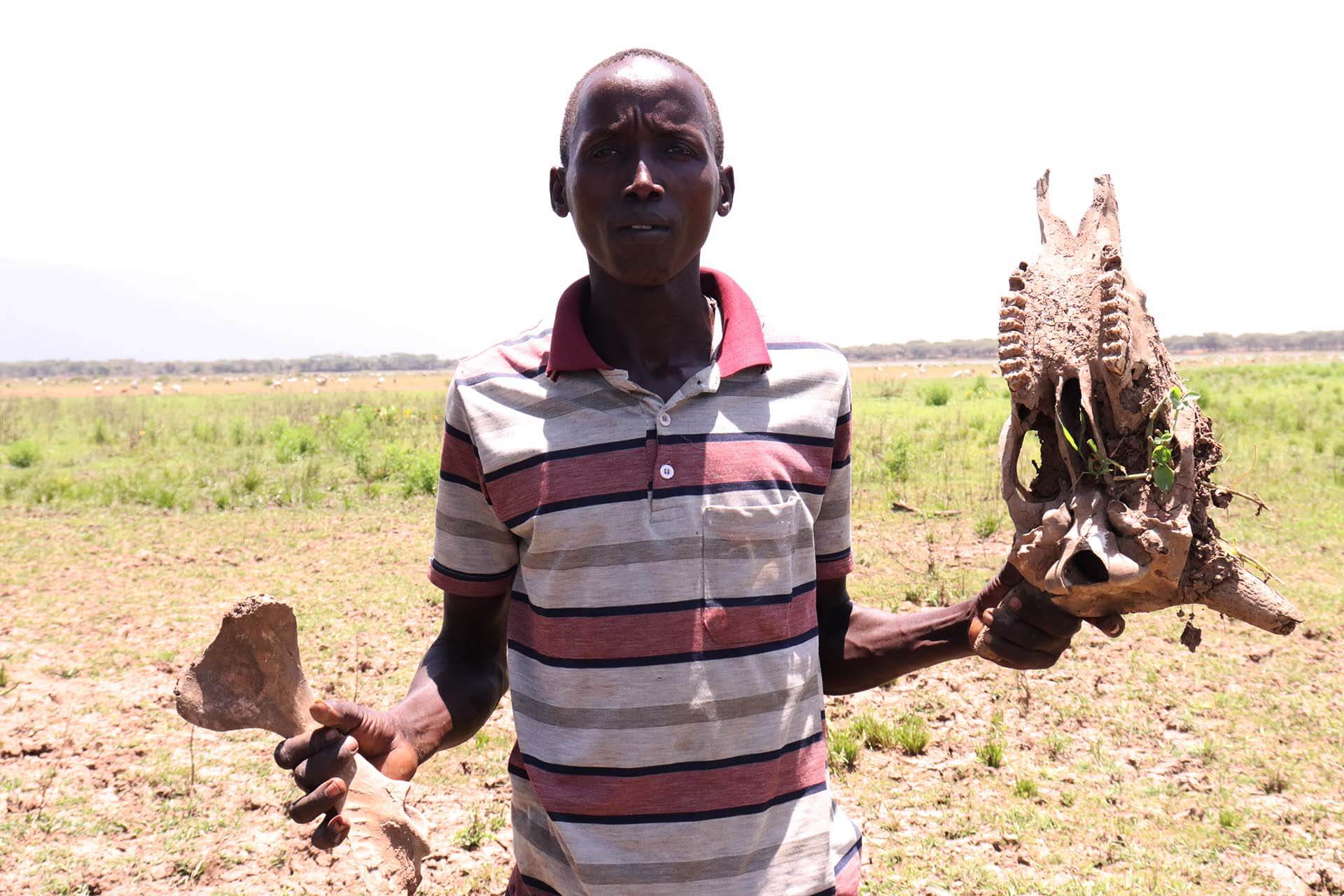


The lake that was
Lake Kamnarok is a seasonal lake and one of the few oxbow lakes in Kenya, found at the base of the Kerio Valley – which is a part of the popular Rift Valley. Baringo County where Lake Kamnarok is located gets rains throughout the year, but with extreme seasonal variation in monthly rainfall. April gets the highest rainfall with an average of 137 mm and January gets the least rainfall with an average of 18 mm.
Baringo is majorly inhabited by pastoralists. They rely on traditional wisdom to predict weather patterns, I learn from Kipcheboi. But the annual rains ensured sufficient water in Lake Kamnarok.
Boyhood memories of paddling across the lake and then fishing to bring food for his family come through in Kipcheboi’s words, implying that the lake was full to its brim once. It was once a bird lovers’ favourite spot. Birds that typically inhabit the lake have deserted the place.
Kipcheboi now relies on sand harvesting – occasioned by siltation, to feed his family of four children. A far cry from fishing. Fishermen from nearby villages have either abandoned fishing or travel farther to other water bodies to catch fish.
When Lake Kamnarok Game Reserve was created in 1983, it was touted as the second largest ecosystem in Africa with the highest number of animals after Lake Chad. Back then the lake was home to over 10,000 white crocodiles, 400 elephants, 13 species of other mammals and a wide variety of bird species. Four decades later, it’s a different scenario. Kenya’s inaugural National Wildlife Census 2021 Report by the Kenya Wildlife and Training Institute does not give the exact number of wildlife currently at Lake Kamnarok but notes an existential threat to them and the ecosystem. The local people do inform of significant reduction in the number of animals that were once sighted often.
Studies over a 35-year period (1981–2015) show an increase in rainfall, with episodes of torrential rain causing floods, alongside episodes of heat waves and prolonged dry spells. Last year’s drought saw the lake that is becoming shallower over time suffer fish die-offs as temperatures soared. Hundreds of carcasses of fish, crocodiles and livestock floated belly-up at the surface that had turned slushy.
“The lake was once a tourist attraction but today no tourists visit,” says Stanley Kiptis, former governor of Baringo – the county under whose administrative jurisdiction the lake falls.
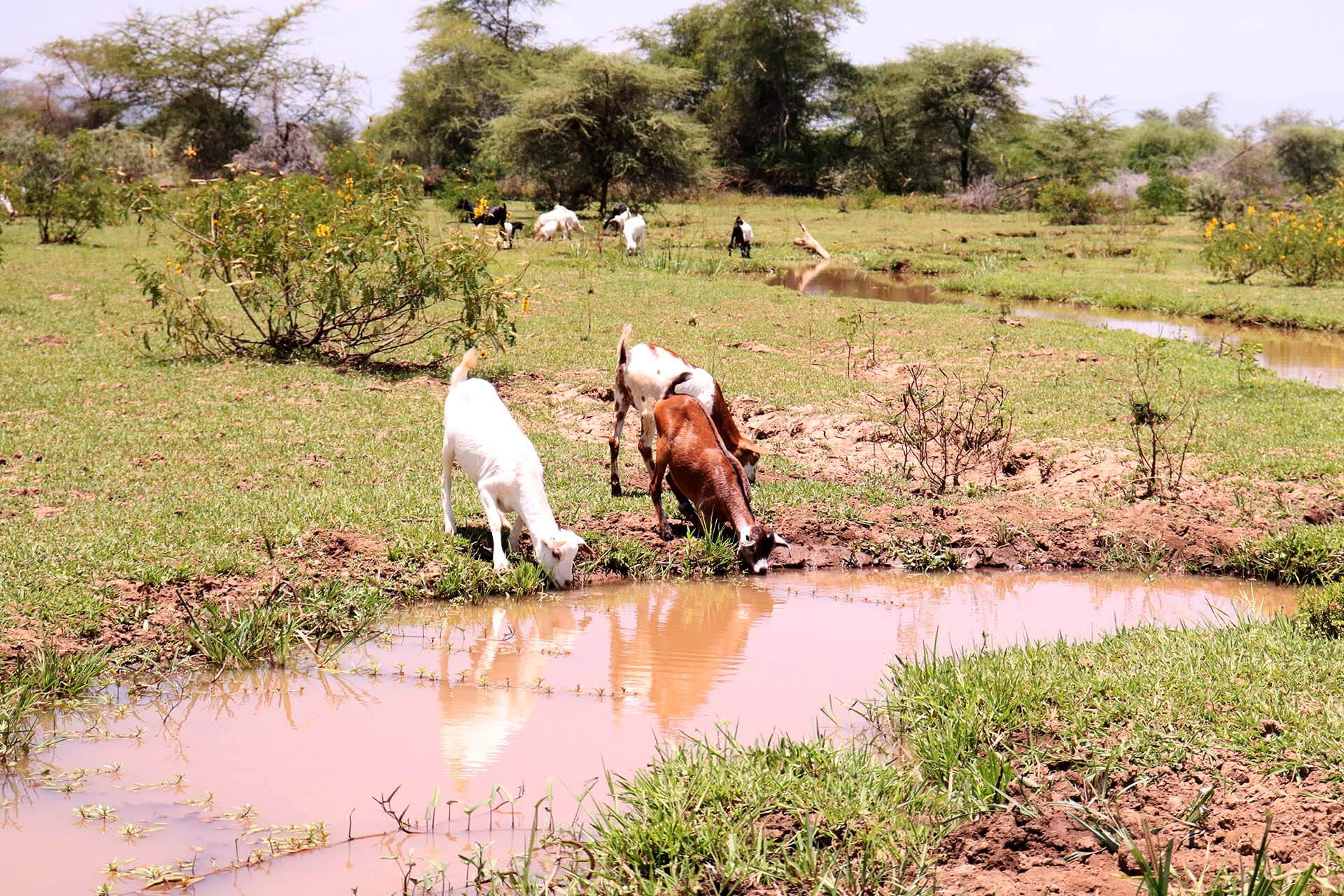
Why did Lake Kamnarok dry up?
Lake Kamnarok is an addition to the statistics of waterbodies worldwide affected by water loss. According to a study of nearly 2,000 lakes published in May 2023, water loss in large lakes around the world was more widespread during the past three decades than previously thought. A warming climate and human water consumption drove at least half of the decline in natural lakes, the study found.
Human activity and changes in underground permeability have been advanced to explain the rise and fall of water levels of lakes in Kenya’s Rift Valley. A study on the impact of climate change on the agro-climatic and agro-ecological zones of Kerio Valley basin points to soil loss and degradation as one of the reasons for Lake Kamnarok being on its deathbed.
There is undeniable evidence of intensive farming close to the lake and along the feeder rivers and springs. Grazing takes place along the feeder rivers and around the lake. The pressure exerted on land loosens the soil, making it prone to erosion. The eroded soil ends up in the lake.
From the remnants of charcoal and tree stumps, a few metres from the lake, it is apparent that trees had been felled to make a charcoal.
Alice Cherop, a villager, avers that as farmers and pastoralists, felling trees to cultivate their ancestral land and graze livestock is natural.
“Due to the hard economic times, some people are now forced to cut the trees and burn charcoal to pay for their basic daily needs," says the 80-year-old Cherop.


Left: cracked ground at Lake Kamnarok signaling lack of rainfall. Right: cracked ground at Lake Kamnarok signaling lack of rainfall. Photos: Barack Oduor
Consequences for local farmers
According to a 2016 study climate change has adversely affected small scale farmers and pastoralists in Kenya. Kenya’s environmental researcher Paul Kalembe says that the slow death of Lake Kamnarok has had a bigger effect on crop production, human-wildlife interaction and has led to hunger in the region.
“When a water body like Kamnarok dies then it has catastrophic effects that results in a crisis with respect to food production and environmental sustainability,” says Kalembe.
The management of the lake was taken over by Kenya’s government in 1983, when Lake Kamnarok Game Reserve was created.
I learn from the local people that for over a decade there has been a standoff between them and the local county government over the ownership of the land in which the diminishing lake sits. More than 7,000 farmers around the lake want the state to compensate them for land they surrendered to create the reserve.
The state had previously toyed with the idea of evicting farmers living around the lake and accused of illegal invasion and degradation.
The Kenya Wildlife Service, a government entity, has had plans to fence off the lake and deploy rangers to ward off invaders. Lead Warder Kenneth Ole Nashuu says they will impose strict measures against farming and cutting down trees around the lake.
“Lake Kamnarok is a legally-acknowledged reserve. We can no longer negotiate with illegal settlers who cause destruction to the environment,” says Ole Nashuu.
Residents say that they have nowhere to go and will only leave if the government provided them alternate fertile land.
“We are ready to leave only if the government allocates us fertile land elsewhere. Otherwise, this place is our ancestral land and for now we have nowhere to go,” says Alice Cherop. “Past regimes have made several attempts to vacate but with no success obviously.”
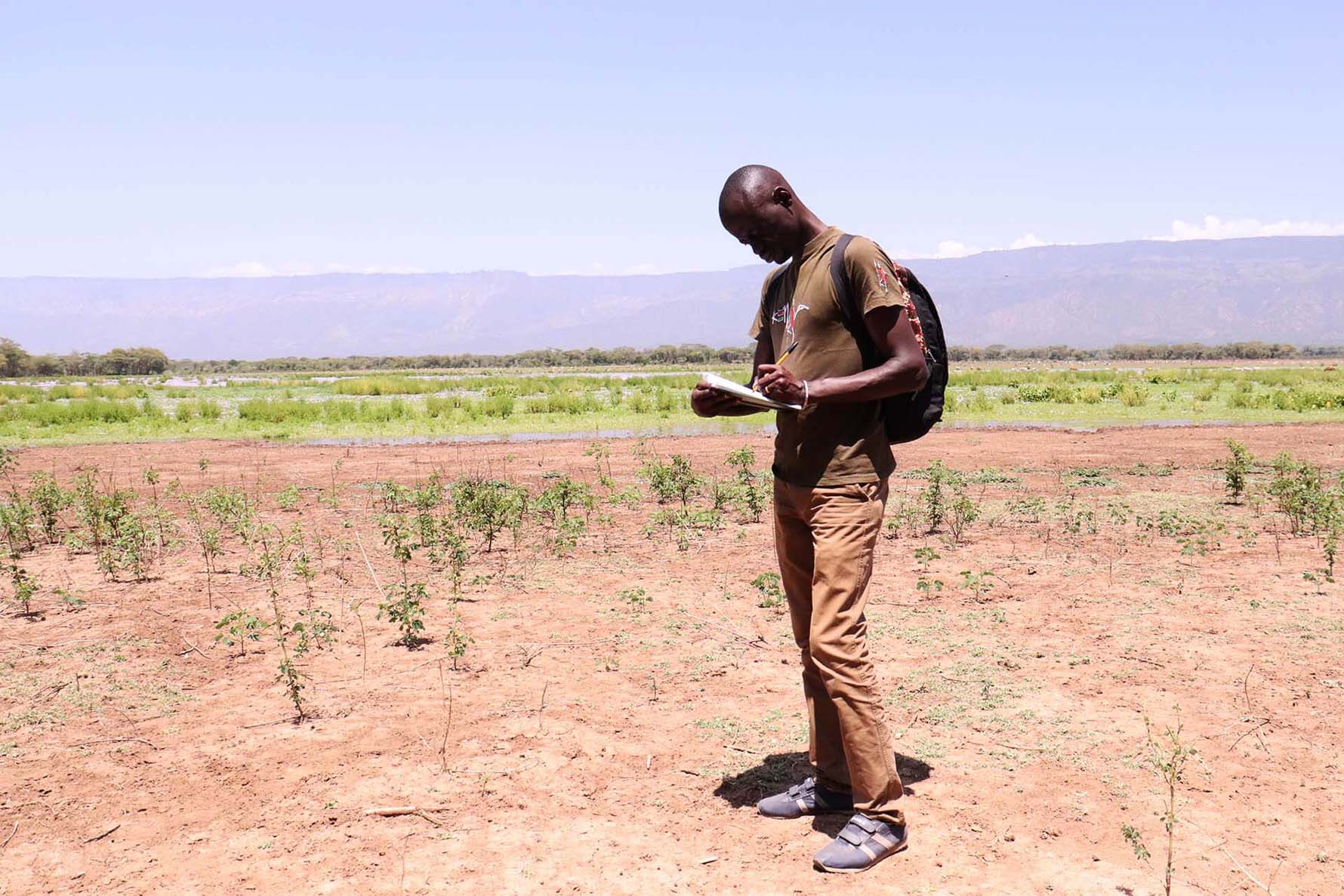
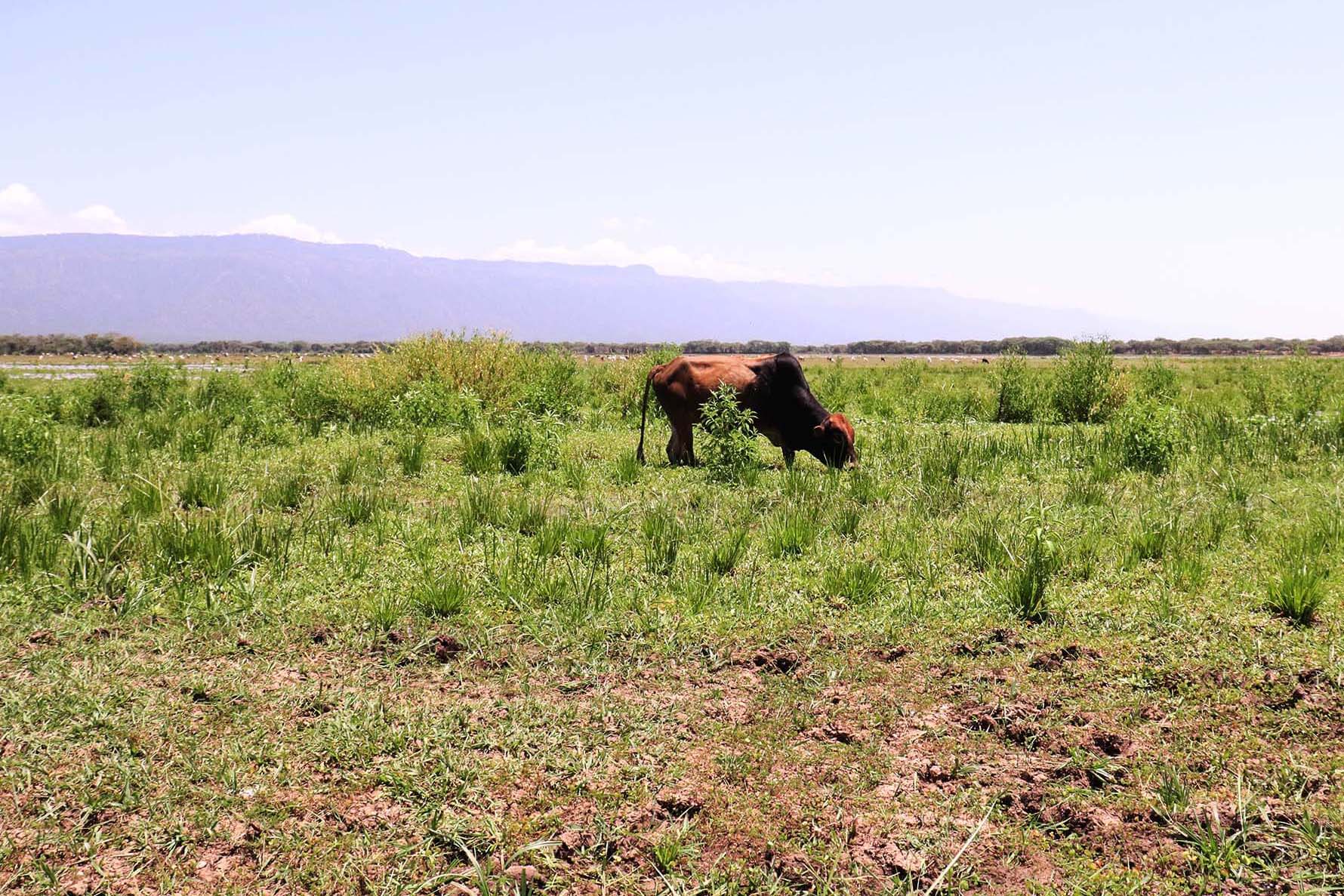
Left: the writer (Barack Oduor) taking notes at Lake Kamnarok. The water levels have greatly receded leaving an empty bare ground. Right: a cow grazing at Lake Kamnarok. The diminished water levels have resulted in a pasture field for the villagers’ livestock. Photos: Barack Oduor
Future-proofing Lake Kamnarok
Before the advent of county governments in Kenya’s administration system in 2013, national reserves such as Lake Kamnarok were managed by the Government of Kenya and Kenya Wildlife Service. Today, it’s under the management of Baringo County and Kenya Wildlife Service. The change has seen increased human activities around the lake. The county government – with funding from the national government – is in charge of the lake restoration
But the local government seems helpless and perhaps unprepared for Lake Kamnarok’s fate. Stanley Kiptis admits that the lake is on its deathbed and urges stakeholders to partner with the county government to save it.
The local county government, in its first attempt to save the lake in 2014, allocated USD 2,74,160 for its reclamation. This bore no fruits. Recently it embarked on reviving the lake at a cost of USD 8,225 to remove the invasive water hyacinth. According to the local people, accountability in the use of funds has been lacking.
Two years ago the community built a few gabions and used earth-filled plastic bags to stop erosion and siltation. The strategy worked temporarily. A local initiative seeking to restore the lake had volunteers and community members spread over 2,500 seed balls of Acacia xanthophloea – popularly known as the yellow fever tree. The seeds were encapsulated in a protective and nutritious biochar ball.
School-going children were given a chance to participate in the activity as a learning process and also as a motivation for them to own the restoration and conservation efforts.
Local environmentalists cast doubts on Lake Kamnarok’s future, given the massive siltation and acute shrinking of water mass. They suggest that human activities such as land reclamation around the lake should be stopped and that restoration efforts should be started. They advocate simple mechanisms such as building of gabions and planting of native trees around the lake.
Villagers loath sights of the lake choked with sediment, as it desiccates and turns into a swampy field since this is the source of their livelihood.
Kipcheboi dreams about the lake’s recovery, and the return of its fish and crocodiles. Yes, the crocodiles! Then he can resume his work as a tour guide and could earn up to USD 10 on a good day. He talks emotionally about eating mud fish and harvesting long grass by the shore with his father to thatch their house.





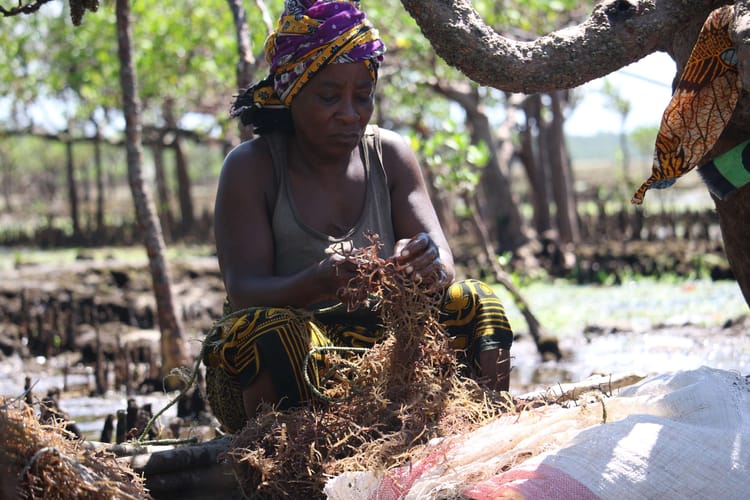
Member discussion